Size Up the Right Area Rug for Your Room
http://decor-ideas.org 11/01/2014 01:23 Decor Ideas
One of the main purposes of a rug is to help define a space. When choosing one, you’ll be considering the floor space you have, what furniture you want on and around it and the connection and balance between the two. Some typical rug sizes are: 4 by 6 or 5 by 7 feet (standard), 6 by 9 ft. (large) and 8 by 10 or 9 by 12 ft. (extra large), but often you can have a rug custom sized. Before you go shopping, use masking tape or newspaper to map out the ideal rug size on your floor and see how your furniture will fit. When in doubt, go slightly bigger — it’s always easier to tuck more of the rug under furniture than it is to make a small rug fill a big space. Here’s how to choose a rug to define your room.
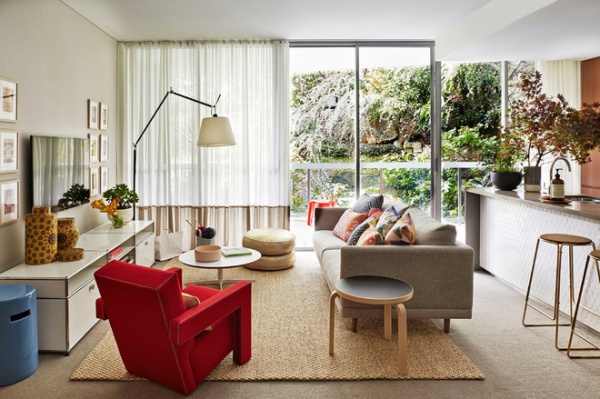
Living Rooms
Small to medium-size open-plan living areas. Visually separate the seating area in an open-plan space using a large sisal rug that fits all the furniture on it. This will help define the perimeter of the zone within the larger, multiuse space. A 6-by-9 rug generally works, and it’s OK for the backs of the sofa and armchair to sit just off the edge of the rug.
See 10 things a rug can do for you
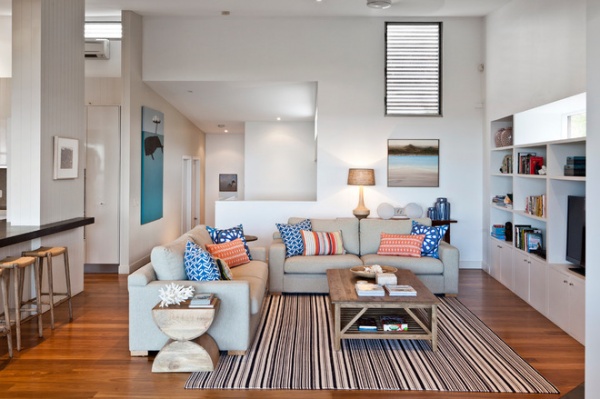
Large open-plan areas. If you have lots of space and large pieces of furniture, then choose a large rug but place it just under the front legs of the sofas, as in this room. This will keep the rug and furniture connected and still fill a large space without your having to buy a massive (and more expensive) rug. Typically a 6-by-9 or 8-by-10 rug will be enough to fill larger spaces.
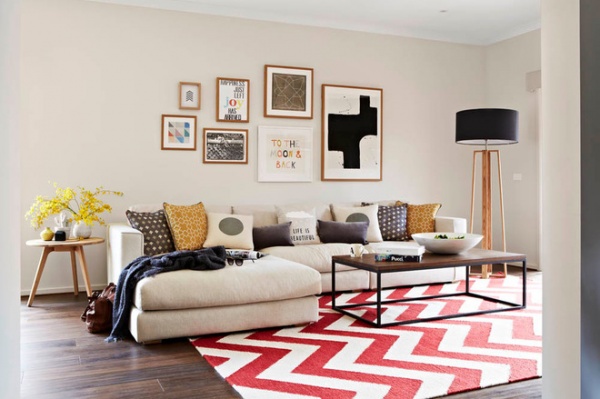
If you have one large sofa, make sure the rug is longer. Or place the sofa just off the edge of the rug for a more abstract feel.
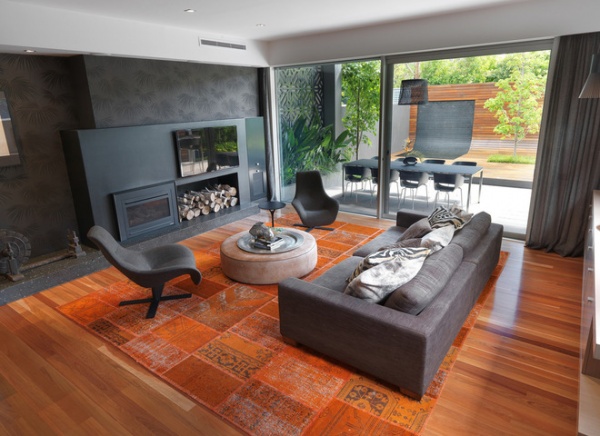
Large living room. In really large, single-room spaces with a single seating area, you may want a large, custom-size rug to make the room feel more intimate. In this case it’s often best that all the furniture sit on the rug, leaving plenty of space to walk around it.
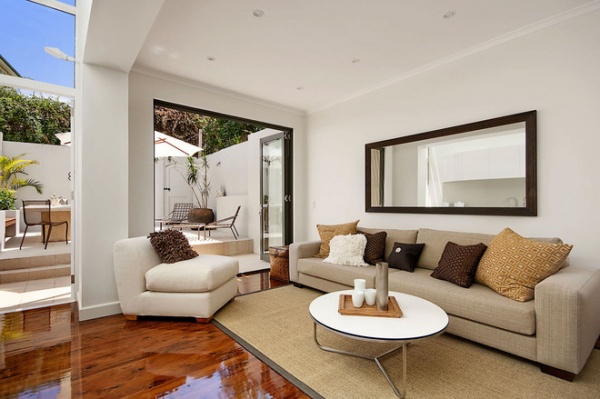
Long and narrow living rooms. If you have a long and narrow space, you’re likely to also have a long sofa. In this case I try to have the rug extend the full length of the sofa with a bit of space to spare. A 5-by-7 or 6-by-9 rug works very well. You can adjust the amount of rug that sits under the sofa to fit the width of the room.
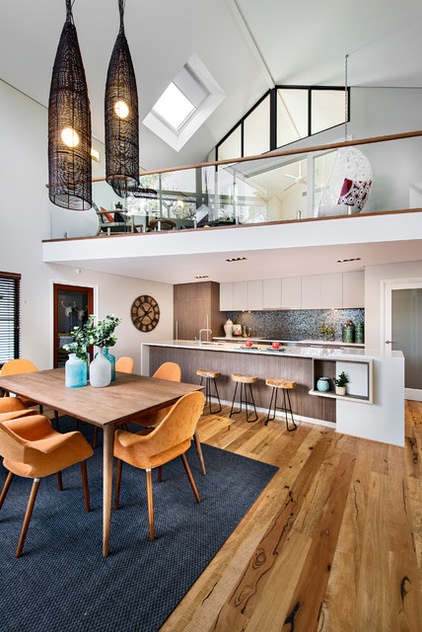
Dining Rooms
Open-plan dining spaces. Especially in large, open-plan spaces, a rug can help define the dining area and separate it from the adjacent kitchen and other seating areas.
The main thing to remember is that the table and chairs need to fit on the rug with enough of a border so the back legs of the chairs don’t fall off the rug when someone is sitting on them. When the chairs are placed under the table, measure 20 inches from the back legs all around — that’s the minimum size the rug needs to be.
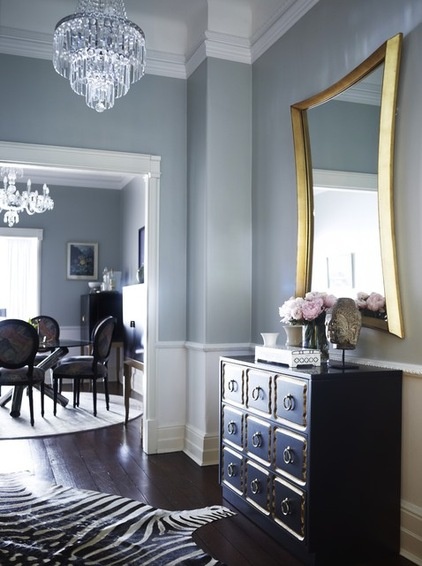
Round dining tables. I think a round rug looks best under a round dining table.
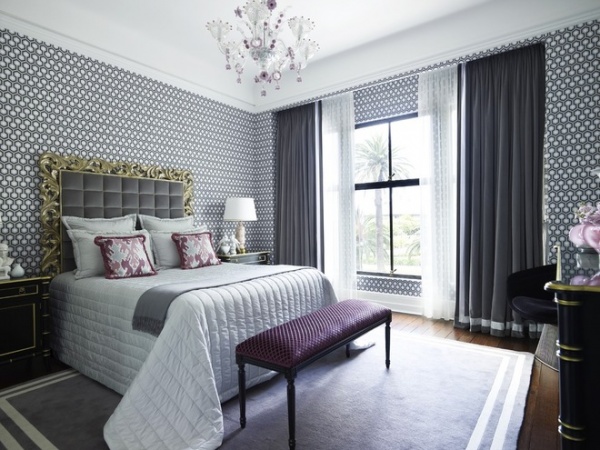
Bedrooms
Master bedroom. An area rug is a great alternative to carpet in bedrooms and can look a lot more stylish. The size needed will vary depending on the size of the room, particularly the space you have at the foot of the bed. You want the rug to start after the bedside tables and to continue at least 20 in. all around. A 5-by-7 rug is the smallest you could get away with for a queen-size bed, but a 6-by-9 is best.
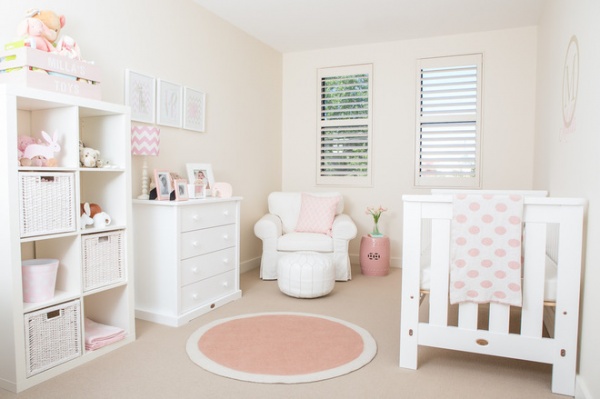
Kids’ bedrooms and nurseries. A small, round rug is a nice decorative feature in these rooms and provides a focal point, as the various pieces of furniture are usually set along the walls.
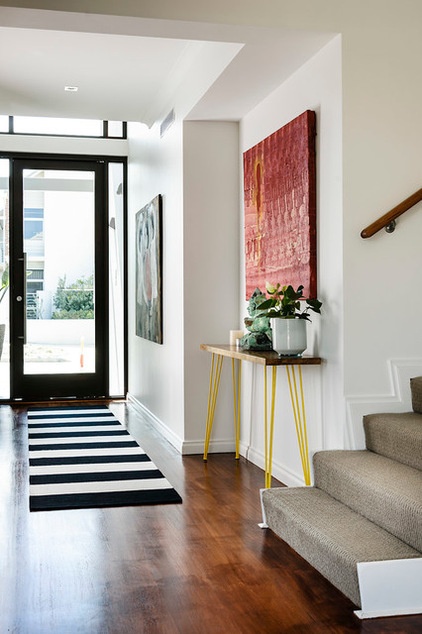
Entry Halls and Undefined Spaces
After living rooms, the hallway is probably the most popular place for a rug (in the form of a runner). You have a lot more flexibility here in terms of how long it can be, but you should make sure that the width still allows for a bit of floor to show either side. A typical hall runner is 2 by 8 ft., but runners can usually be cut to any length.
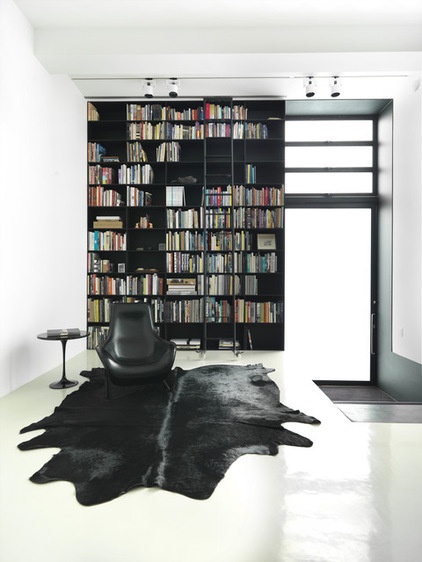
A rug can make a minimally furnished space feel welcoming. The shape of the cowhide rug here adds softer edges to this very rectangular area. A round rug would also work well in this room.
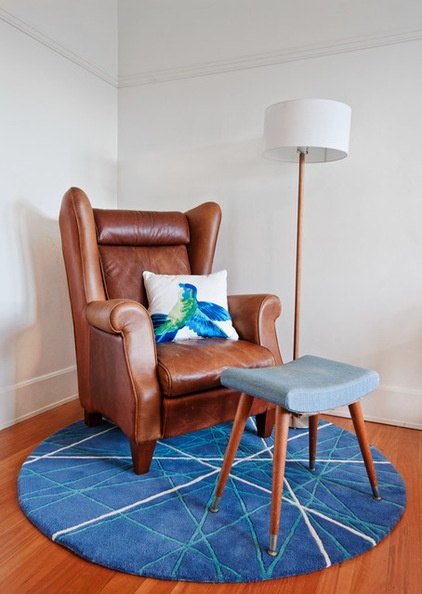
A round rug under an armchair can define a reading or relaxing nook within a larger space, such as a bedroom or living area. It also works under a small desk in the corner of a room. Typically, a round rug under an armchair needs to be at least 4 to 5 ft. in diameter.
Have a favorite rule of thumb for choosing an area rug? Please share it with us in the Comments.
More:
11 Area Rug Rules and How to Break Them
Browse area rugs in the Shop Houzz section
Related Articles Recommended












